Get PeakVisor App
Sign In
Search by GPS coordinates
- Latitude
- ° ' ''
- Longitude
- ° ' ''
- Units of Length

Yes
Cancel
Share ×

Scan the QR code and open PeakVisor on your phone
❤ Wishlist ×
Choose
Delete
Known for its rich cultural heritage and stunning old-growth forests, Lassen National Forest is a federally protected area in the northeastern part of the US state of California. It covers some 1,700 square miles (4,300 sq. km) of land and contains 180 named mountains, the highest and most prominent of which is Lassen Peak (10,456ft/3,187m).
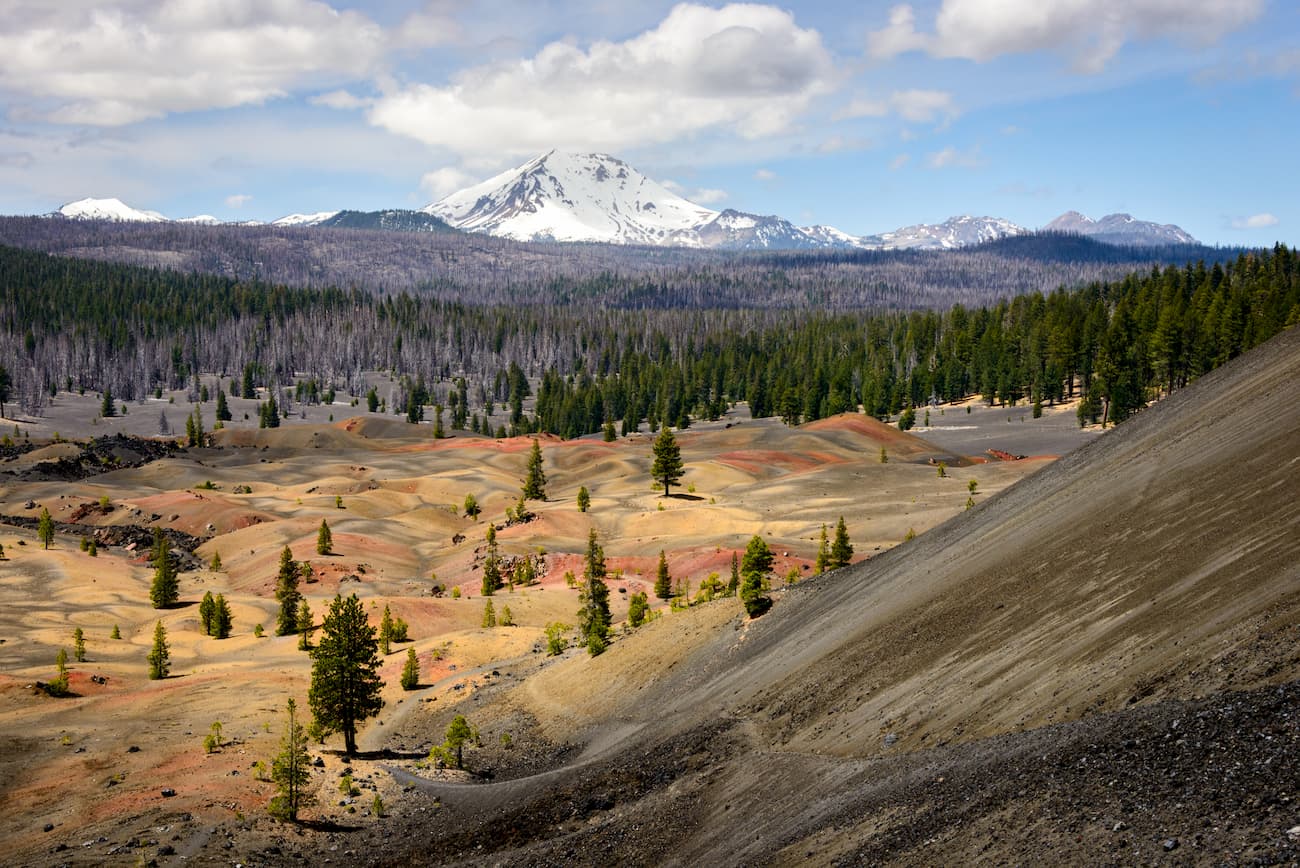
Lassen National Forest is located in parts of Lassen, Tehama, Plumas, Shasta, and Butte Counties and is just to the northeast of the Sacramento Valley near California’s border with Nevada. It is separated from the nearby Shasta-Trinity National Forest by the northern edge of the Sacramento valley, including the city of Redding.
The forest is located in a section of northern California that’s dominated by a patchwork collection of publicly owned land. Lassen National Forest surrounds the nearby Lassen Volcanic National Park to the west on three sides. Additionally, Lassen National Forest is bordered to the south by Plumas National Forest.
It also includes a number of wilderness areas, such as the Caribou Wilderness, the Thousand Lakes Wilderness, and the Ishi Wilderness, the latter of which is partially managed by the Bureau of Land Management (BLM).
Unlike the majority of the mountains in California are not part of the Sierra Nevada, the California Ranges, or the Northwest US Coast Ranges. Rather, the peaks in Lassen National Forest are the southernmost extent of the Cascade Range, which covers a significant portion of the Pacific Northwest, starting in northern California and traversing through Oregon and Washington, before terminating in the southernmost part of the Canadian province of British Columbia.
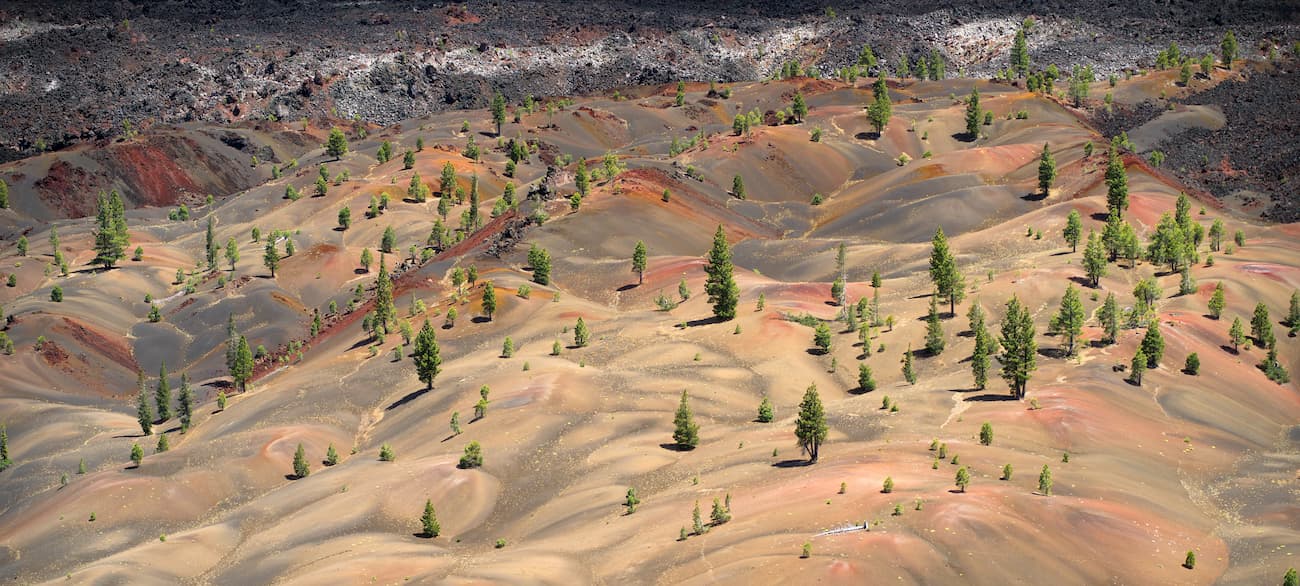
Lassen Peak, the tallest peak in both Lassen National Forest and Lassen Volcanic National Park, is generally considered the southern terminus of the Cascade Range. The Cascades are a volcanic arc that’s part of the greater Ring of Fire, which circumnavigates the majority of the Pacific Ocean, creating volcanoes in places such as Alaska, Japan, Chile, Ecuador, the Philippines, New Zealand, and Indonesia.
These peaks formed as the smaller Juan de Fuca, Explorer, and Gorda plates slid under the larger North American plate, creating a mountainous region that continues to be volcanically active to this day. The entirety of what’s known as the “Cascade Arc” contains about 20 major volcanoes, including, Mount Rainier, Mount Baker, Mount Hood, Mount Saint Helens, Glacier Peak, and Lassen Peak.
Out of all of these peaks, Lassen Peak and Mount Saint Helens are the only two that have had major eruptions in the last two centuries. Lassen Peak is primarily made of igneous dacite and is known to be one of the largest plug dome volcanoes in the world. It most recently erupted in violent fashion between 1914-1921 and continues to be active to this day.
Other nearby shield volcanoes include Mount Harkness, Red Mountain, Prospect Peak, and Raker Peak. Additionally, although the region no longer has any active glaciers, it was shaped by extensive glaciation during the Pleistocene, which caused many of the notable features that we see to this day.
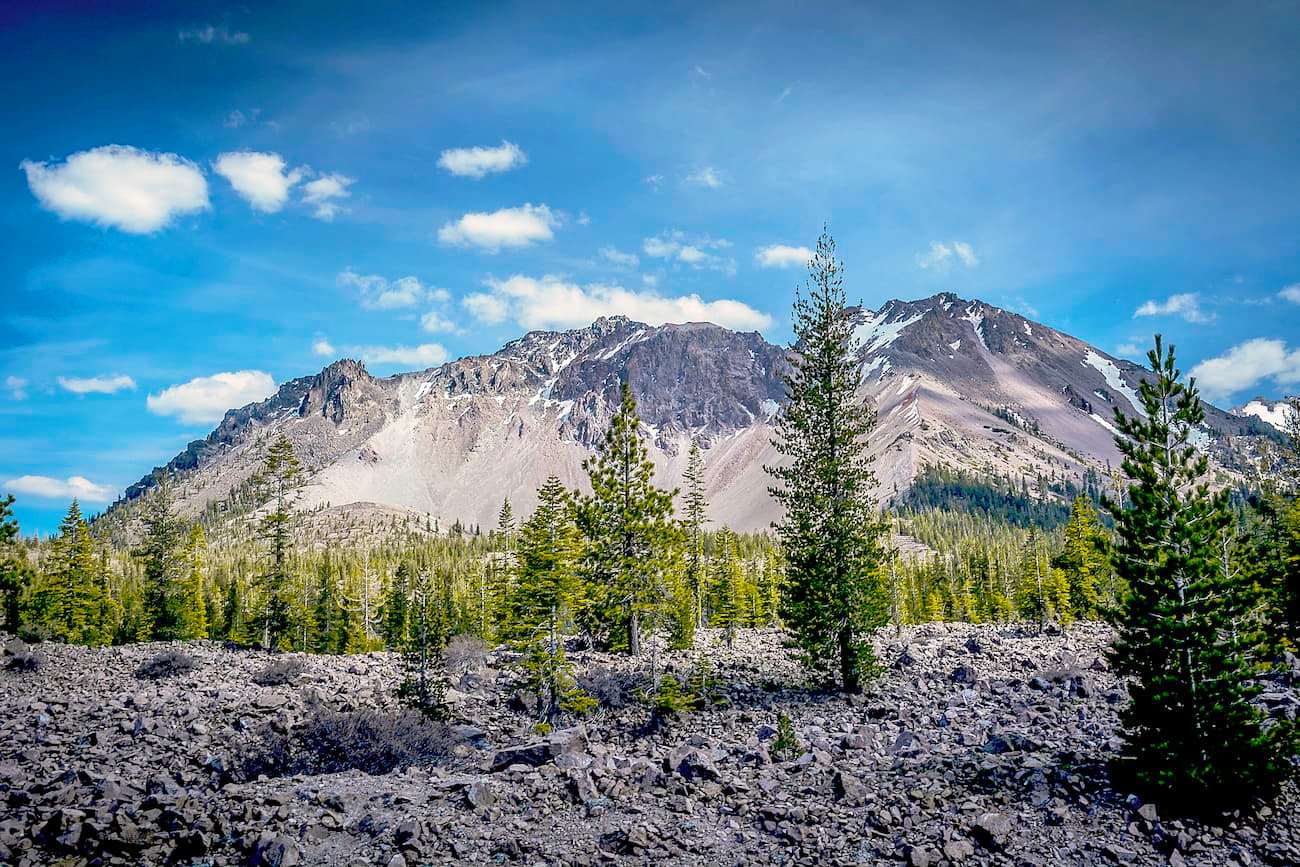
Below treeline, Lassen National Forest is mostly covered by coniferous forests, much of which is dominated by Jeffrey pine, lodgepole pine, white fir, red fir, ponderosa pine, and coast Douglas-fir. Some surveys also estimate that Lassen contains around 92,000 acres (37,231 ha) of old-growth forest.
The region is also home to an abundance of wildlife, including raccoons, coyotes, fox, mule deer, martens, cougars, bobcats, and black bears. Interestingly, Lassen National Forest was also the site of the birth of some of the first wolf pups in California in over a century after a female and male wolf migrated into the forest from Oregon and had a litter of pups in 2017. While Northern California is traditional wolf territory, wolves were extirpated from the state after the arrival of European and European-American settlers.
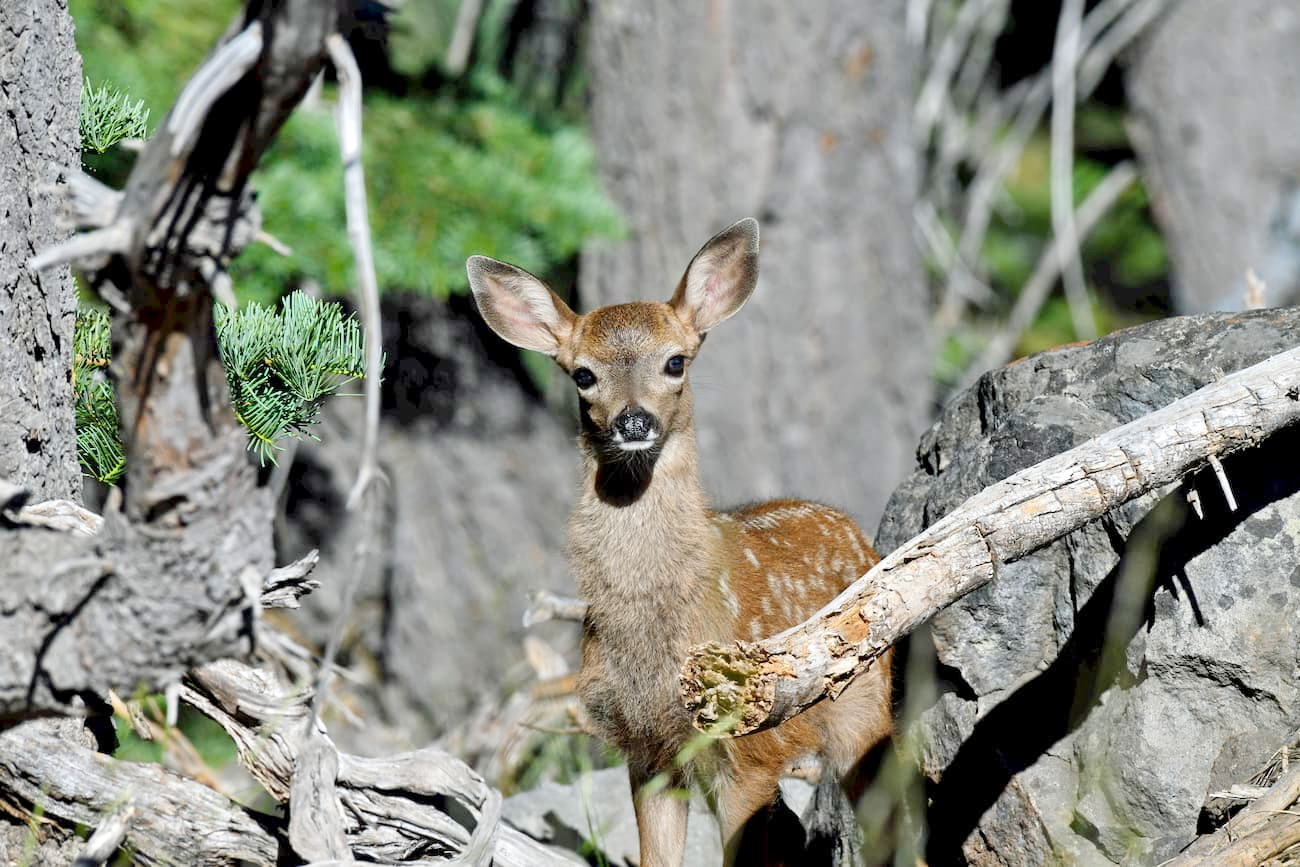
The region in and around Lassen National Forest has been inhabited by humans for tens of thousands of years. Many of the area’s native inhabitants, including the Yahi and their parent tribe, the Yana, were killed during a genocide in the 19th century.
Lassen National Forest was the site of a number of different early conservation efforts, having been established in 1905 as one of the original National Forest Reserves. However, the Caribou Wilderness and the Thousand Lakes Wilderness weren’t officially designated until the 1964 Wilderness Act. The Ishi Wilderness was protected some 20 years later with the passing of the 1984 California Wilderness Act.
Lassen National Forest contains a huge network of trails for day hiking and backpacking. Here are some of the main hiking areas to check out:
The Ishi Wilderness is located on the southwestern edge of the Lassen National Forest. It is partially managed by the Bureau of Land Management (BLM) and is home to two mountains, Iron Mountain and Table Mountain.
The wilderness is known for its unique geological structures including huge basalt outcroppings, pillar lava formations, and caves. Rugged river canyons traverse the wilderness, which protects a significant portion of the foothills of the southernmost part of the Cascade Range.
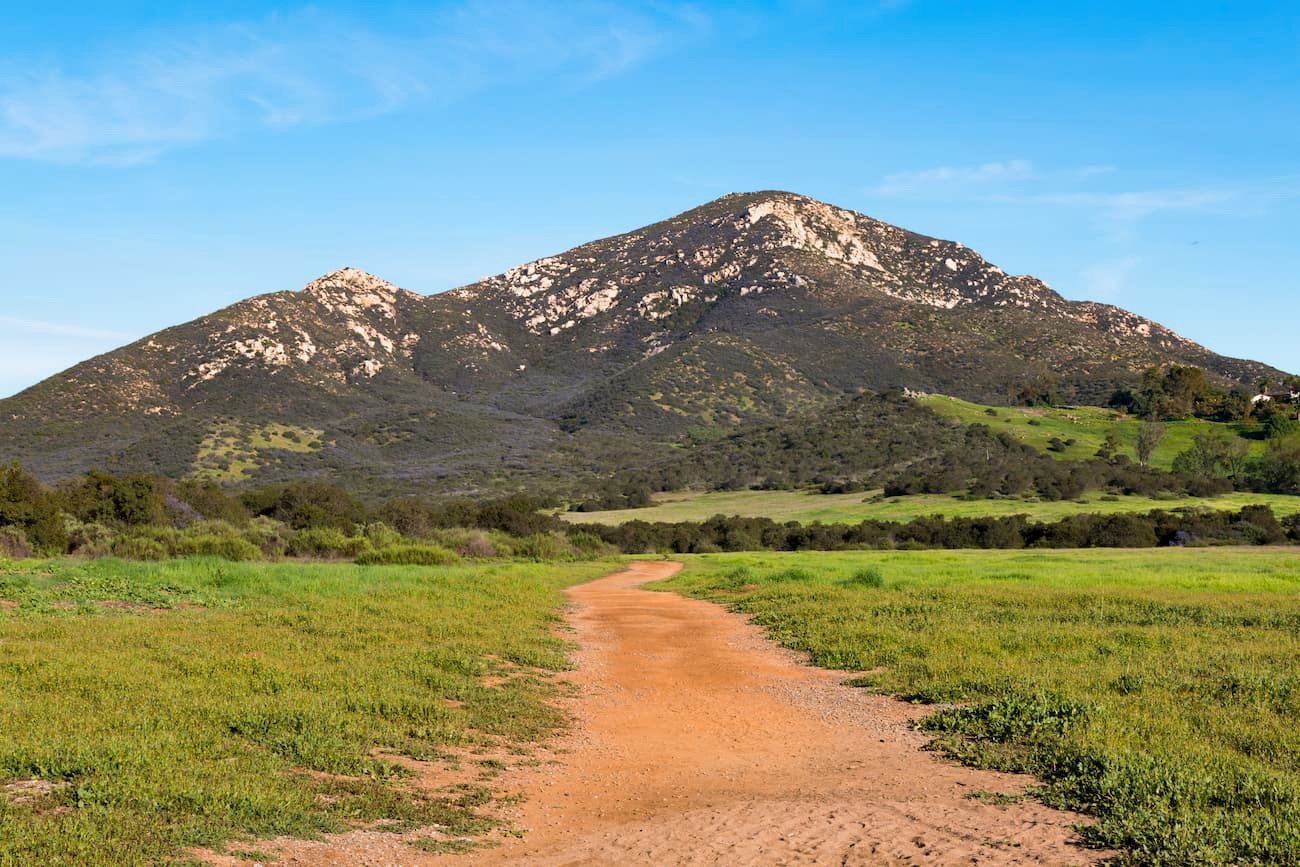
Unlike much of the rest of the first, the Ishi Wilderness is covered mostly with chaparral and oak, although there are some smaller clusters of ponderosa pine. The Ishi Wilderness is also known for being home to one of the largest migratory deer herds in California, the Tehama deer herd. Visitors can also see mountain lions, wild hogs, black bears, bobcats, and raptors in the wilderness.
Additionally, the Ishi Wilderness contains a large number of archeological and historical sites, many of which are the last remnants of the Yana people, most of whom were killed during the California Genocide. The Forest Service asks that any visitors to the Wilderness respect this cultural record of the Yana people by not disturbing any artifacts.
The Caribou Wilderness is located along the western edge of the Lassen National Forest along the forest’s border with Lassen Volcanic National Park and the Lassen Volcanic Wilderness. It is home to 5 named mountains, the highest and most prominent of which is Red Cinder.
The vast majority of the Caribou Wilderness is a volcanic plateau which is covered by conifer forests, large talus slopes, and cinder cones. Although it wasn’t formally protected as a wilderness area until 1964, the Caribou Wilderness was protected as a forest preserve starting in 1932, so it contains some of the most pristine remaining forests in the California portion of the Cascades.
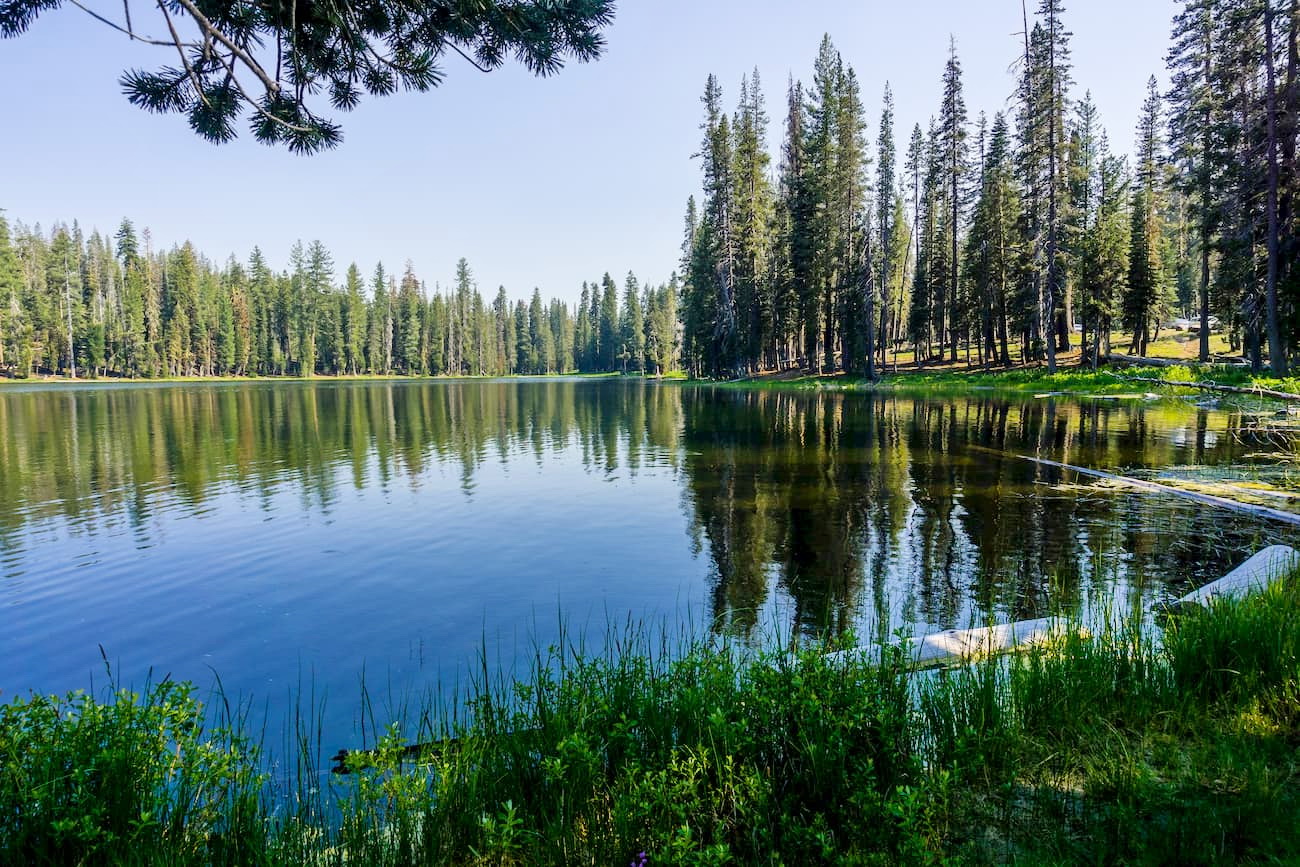
The Caribou Wilderness is home to 23 named lakes, which provide ample fishing opportunities. There are also plenty of hiking opportunities within the wilderness, which can be accessed either through the Lassen Volcanic National Park or from Lassen National Forest.
The Thousand Lakes Wilderness is situated in the northeastern corner of Lassen National Forest. It contains 7 named mountains, the highest and most prominent of which is Crater Peak.
Despite its name, the Thousand Lakes Wilderness does not have a thousand lakes, but it does have several large lakes that make for good hiking destinations. The entirety of the wilderness was created through a combination of volcanic activity and glacial erosion.
Within the wilderness, there are large populations of trout, black bear, pine marten, black-tailed deer, and pika. Four trailheads provide visitor access to the Thousand Lakes Wilderness’ 21 miles (34km) of trails for anyone looking for an adventure that’s a bit off the beaten path.
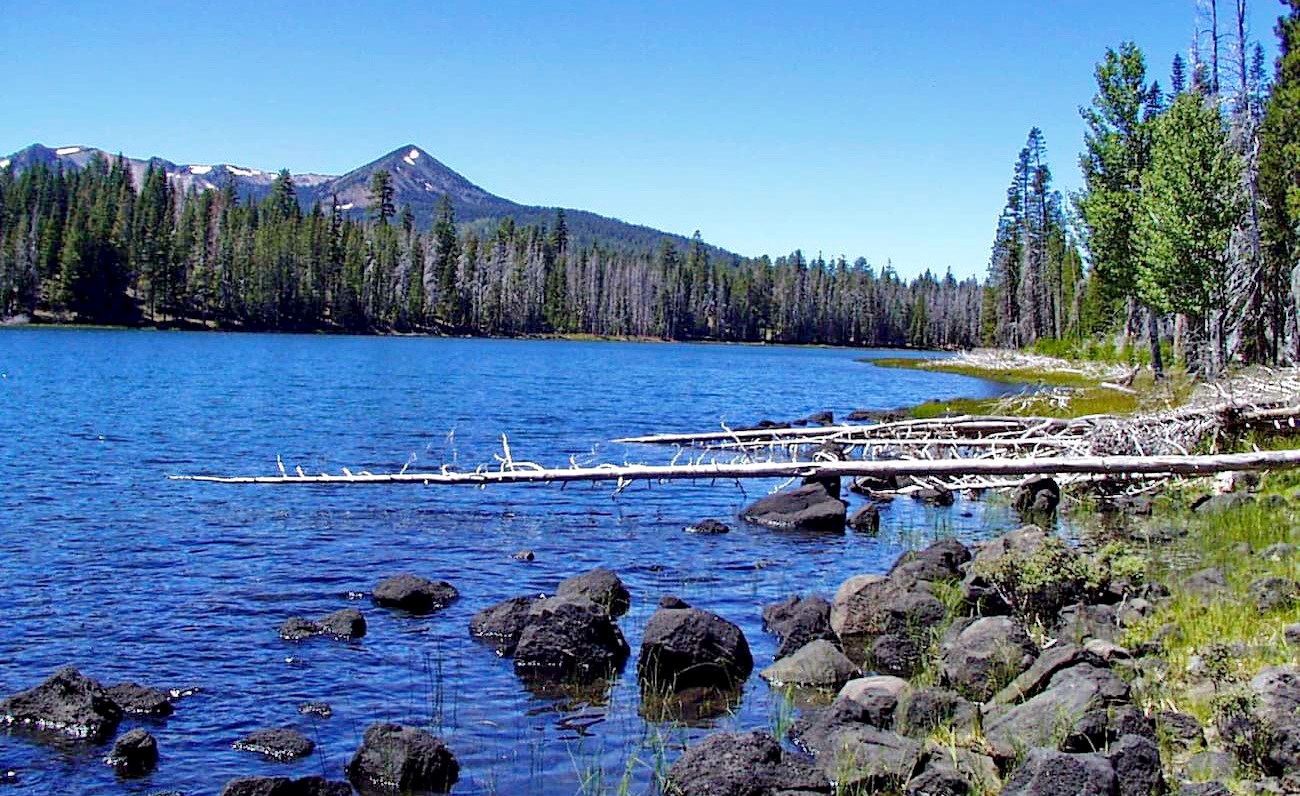
Here are some of the best places to stay before or after your trip into Lassen National Forest:
The city of Redding is located at the northern edge of the Sacramento Valley to the west of the Lassen National Forest. It has over 90,000 residents and is a great place to start any adventure in the southernmost part of the Cascades. Redding has regular train service throughout the Pacific Northwest, as well as a small municipal airport and good highway connections around California.
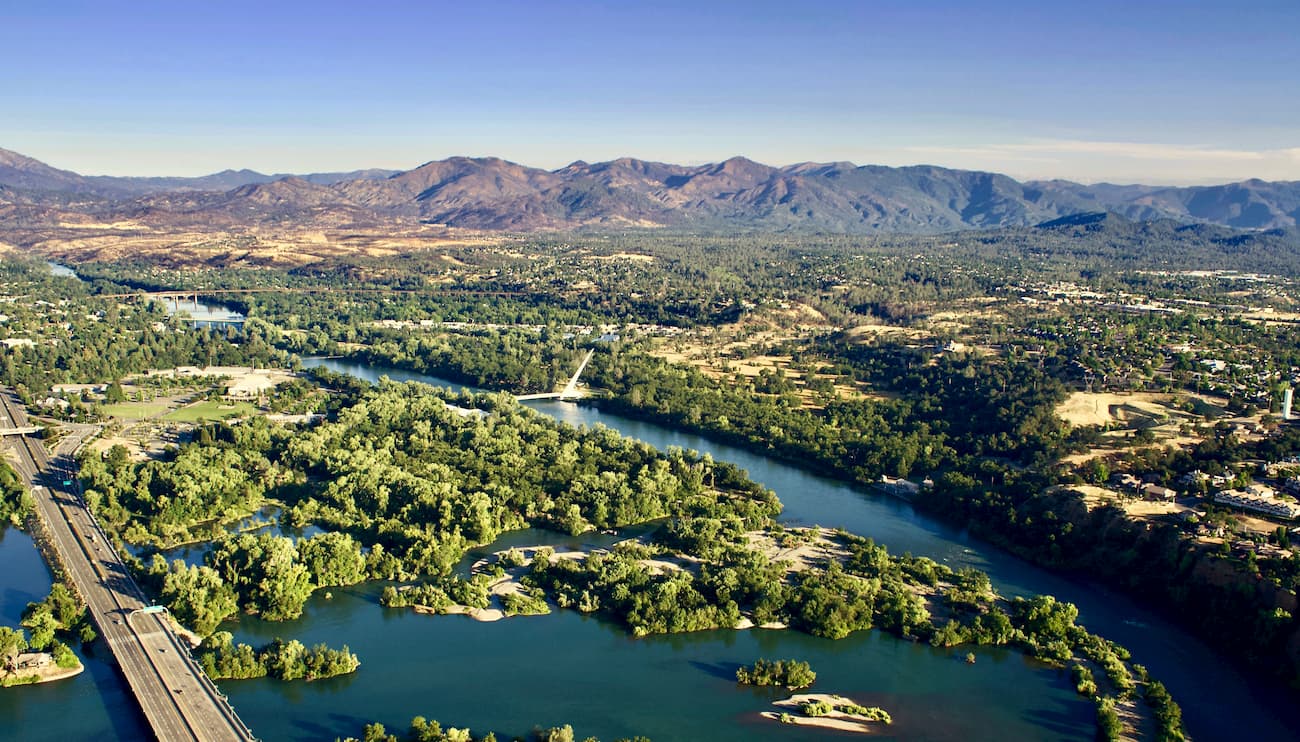
Sacramento is the capital city and the sixth-largest city of California with a population of 513,000 people. It is about a 2-3 hour drive south of Lassen National Forest and offers good transport connections by road, air, and train to the rest of the state.

Reno is the second-largest city in Nevada, with a population of over 225,000 people. It is located along the California/Nevada border and is to the southeast of the Lassen National Forest, about a one and a half-hour drive away.
Reno is easy to get to by road on I-80 and it also has a major international airport, which provides good access to other large cities around the country. It’s also a popular tourist destination with plenty of hotels, shops, and restaurants to enjoy.

Explore Lassen National Forest with the PeakVisor 3D Map and identify its summits.








ultra
volcano
cascade-range-9000ers
western-state-climbers
western-state-climbers-emblem
chico-hiking-association
cascade-volcanoes-pin
california-ultras
cascade-range-9000ers
western-state-climbers
western-state-climbers-emblem
chico-hiking-association
ultra
volcano
cascade-range-9000ers
western-state-climbers
western-state-climbers-emblem
chico-hiking-association
cascade-volcanoes-pin
california-ultras
